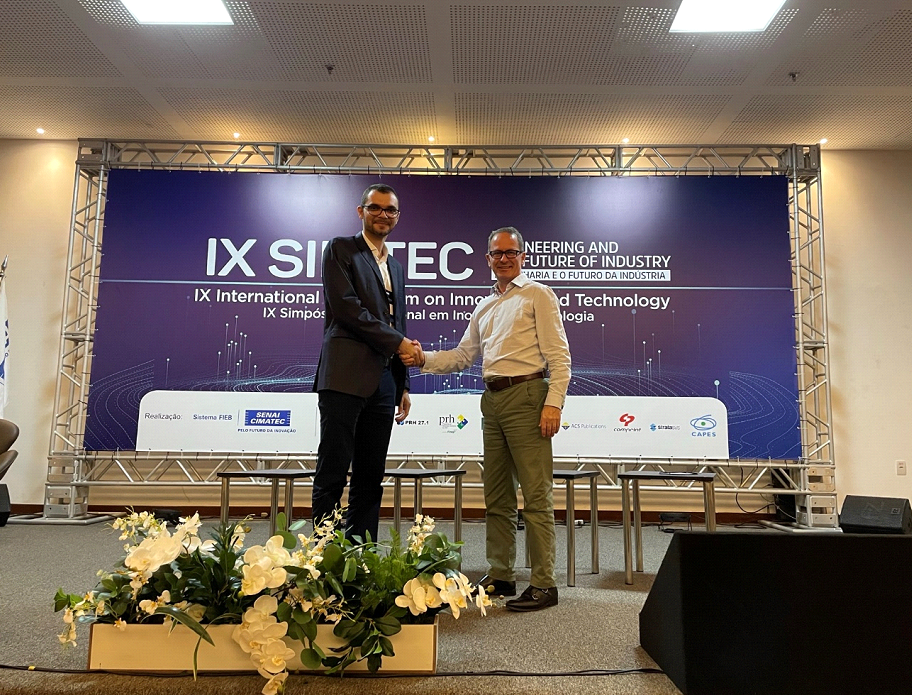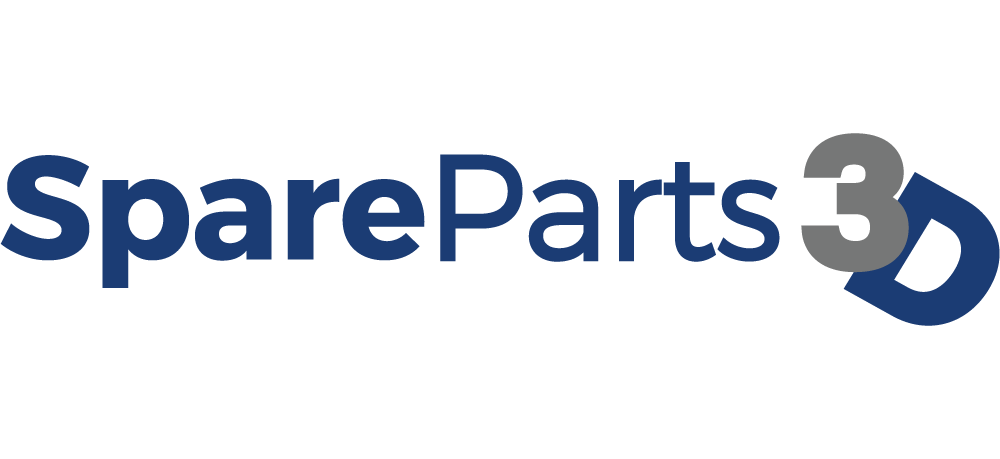French AM startup Spare Parts 3D (SP3D) and SENAI CIMATEC have signed an agreement to make additive manufacturing technologies more accessible to Brazilian companies, especially regarding spare part production.
This move addresses challenges such as production halts caused by part malfunctions and lengthy replacement times of up to 180 days. Signed on December 20, 2023, the agreement between SENAI CIMATEC and SP3D strives to mitigate these issues and improve manufacturing practices nationwide.
“Spare Parts 3D offers to digitize spare parts inventories after analyzing them, and identifying potential parts for additive manufacturing that have an associated positive business case. SENAI CIMATEC will step in with its capacity to 3D print these parts, mechanical testing, product qualification, and inspection, from scanning to final parts,” says Bruno Caetano, Executive Director for new activities at SENAI CIMATEC.

Brazil gears up for on-demand manufacturing
Under this collaboration, SP3D will conduct detailed analyses of customers’ inventories, determining the required quantity of parts and identifying those likely to be used within a given period. SENAI CIMATEC, on the other hand, will handle requests for 3D printing using various technologies, including high-performance polymers, polymer composites, and metallic materials.
By combining SP3D’s proficiency in spare parts inventory analysis and digitization software with SENAI CIMATEC’s additive manufacturing capabilities, this distinctive partnership aims to ease Brazilian companies’ transition to Industry 4.0. The goal is to offer holistic solutions encompassing spare part identification, 3D printing, and digitization. Highlighting the partnership’s objective, Caetano emphasized the aim of providing additive manufacturing at a large scale. This initiative enables companies to efficiently produce parts tailored to their specific requirements.
Christian Darquier, Vice President of SP3D, said, “By digitizing the right parts with the right industrial characteristics, mechanical properties and economics for 3D printing, these companies can help relocate parts production in the country, with reduced delivery times and a consequent reduction in carbon footprint.”
Over the years, SP3D has helped advance additive manufacturing by many measures. For instance, SP3D worked with the French Defense Innovation Agency (DIA) and the University for Research in Automated Production (LURPA) from the École Normale Supérieure Paris-Saclay on ‘RAPID’. Their joint initiative sought to automate the conversion of 2D technical drawings into printable 3D models using SP3D’s DigiPart platform.
Brazilian petrochemical company Braskem adopted SP3D’s DigiPart program to optimize its inventory supply chain. Through a pilot project, Braskem utilized DigiPart to evaluate the necessity of 15,000 spare parts, identifying 47% as surplus. Alexandre Pintor da Luz, Project Coordinator at Braskem, underscored the significance of reliable estimates and efficiency, expressing anticipation for scaling the project in subsequent phases.

Right to Repair promotes sustainable consumption and economic efficiency
Other news related to spare parts may also boost 3D printing applications. Recently, the European Parliament has reached a provisional agreement on European Union (EU) regulations to enhance consumers’ right to repair. Negotiations over the bill, initiated in March 2022, have culminated in provisions mandating manufacturers to provide spare parts and tools at reasonable prices and prohibiting hindrances to independent repairs.
Additionally, the regulations aim to inform consumers about product lifespan and repairability, while offering supplementary rights such as borrowing devices during repairs and accessing repair prices online free of charge. Each EU member state is required to introduce measures promoting repair, with implementation expected within 24 months following adoption by the Council and Parliament.
Since 2021, the Right to Repair legislation has compelled companies selling consumer electronic goods in the EU to guarantee repairability for up to a decade. Seeking insights into compliance strategies, 3D Printing Industry spoke with EOS, Spare Parts 3D, DiManEx, Ricoh 3D, and Link3D. These companies discussed the potential of 3D printed spare parts in aiding manufacturers to adhere to the legislation, averting the need for extensive physical inventories of replacement parts and mitigating associated expenses.
Another example of how 3D printed spare parts are used can be found in the collaboration between Replique and German home appliance manufacturer Miele to produce and distribute 3D printed accessories via its decentralized production network. The partnership announcement between Replique and Miele coincided aptly with the EU legislation granting consumers the “Right to Repair” on their purchased goods.
What 3D printing trends do the industry leaders anticipate this year?
What does the Future of 3D printing hold for the next 10 years?
To stay up to date with the latest 3D printing news, don’t forget to subscribe to the 3D Printing Industry newsletter or follow us on Twitter, or like our page on Facebook.
While you’re here, why not subscribe to our Youtube channel? Featuring discussion, debriefs, video shorts, and webinar replays.
Are you looking for a job in the additive manufacturing industry? Visit 3D Printing Jobs for a selection of roles in the industry.
Featured image shows Bruno Caetano, Director SENAI CIMATEC (left) and Christian Darquier, VP Sales SPARE PARTS 3D at the signing of the partnership. Photo via Spare Parts 3D.



